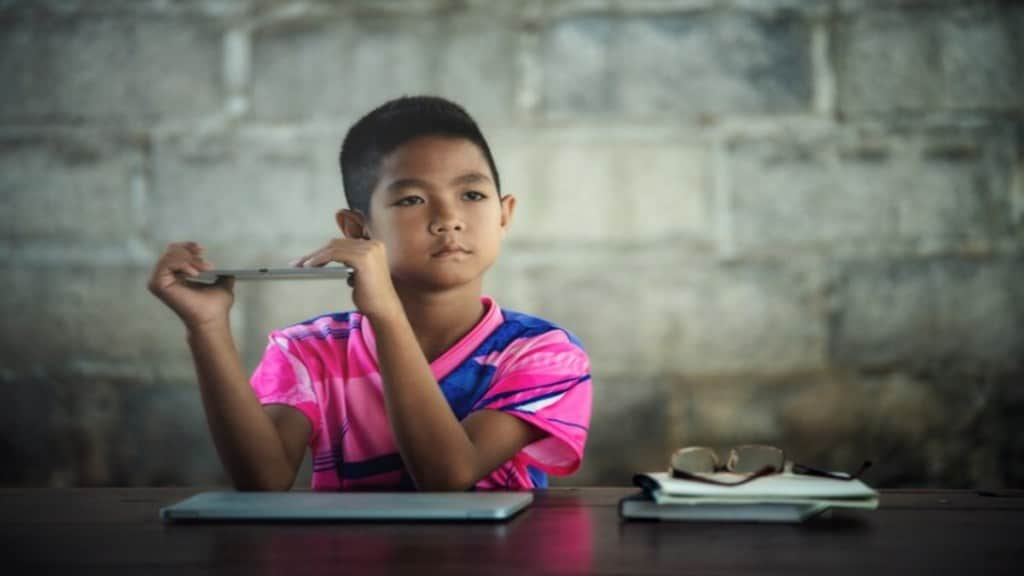A nation which aims to be called ‘Developed’ by 2047 is still to overcome one of its biggest challenges, of provision of affordable and accessible education to all. Poverty besides the gap in socio-economic level is believed to be one of the reasons behind the divide between literate and educated Indians. “The underprivileged status of a significant number of students in India can be attributed to a combination of socioeconomic factors. First and foremost, economic disparities hinder access to quality education. Many families, especially in rural areas, struggle to afford the associated costs of schooling, such as uniforms, books and transportation,” Kavita Sharma, co-founder and CEO of Ziyyara Edutech, told FE Education, adding that the lack of proper infrastructure, including schools in remote areas, exacerbates the problem.
Furthermore, it is believed that social and cultural norms may also contribute, as certain communities may face discrimination, limiting their educational opportunities. Moreover, the prevalence of child labour in economically vulnerable households further prevents children from attending school regularly.
In India, more than 200 million school students enrolled in FY22, and of this 74% of students attended classes in elementary schools, as per the data by Statista, a market research firm. Surprisingly, the data points out that according to Statista’s 2021 data, around 7.7% of India’s population faced multidimensional poverty and lacked access to schooling opportunities. This indicated a relatively lower proportion of the population experiencing such poverty and educational deprivation in the country. Furthermore, an individual categorised as multidimensionally poor lacks sufficient access to one-third or more of ten indicators spread across three equally significant dimensions: health, education and standard of living.
To be sure, the government’s spending on education has been increasing. On February 1, at the time of the interim budget, Finance Minister Nirmala Sitharam stated that the Department of School Education and Literacy (DoSEL) has been allocated a total budget of Rs 73,008 crore for the fiscal year 2024-25. This marks the highest-ever allocation for the sector, showcasing a substantial increase from the previous fiscal year’s allocation of Rs 68,804 crore. This represents a notable 6.11% rise in budgetary provisions. However, despite the noticeable spending from the government, access to quality education for the 7.7% deprived population in India remains challenging. Experts suggest that to uplift the scale of education for the large underprivileged student population in India, more focus and targeted efforts are needed from the government and other stakeholders. “Efforts to improve education for underprivileged students require a multi-pronged approach. This includes increasing government spending on education, prioritising infrastructure development in rural areas, implementing teacher training programmes, and leveraging technology for distance learning. Additionally, targeted scholarships, community involvement, and awareness campaigns are essential to address socio-economic barriers hindering access to education,” Vinesh Menon, CEO, Human Development and Social Impact Solutions, Ampersand Group, said.
And then there is the challenge of quality among those students who have access to it. For example, the Annual Status of Education Report (ASER 2023: Beyond Basics) shows that among rural students, about 25% of students aged between 14-18 years still cannot read a grade second level text fluently in their regional language, more than half struggle with division (three-digit by one-digit) problems and only 43.3% between the age bracket of 14-18-year can solve problems correctly. This skill is usually expected in third and fourth grades. Further, a little over half can read sentences in English (57.3%). Of those who can read sentences in English, almost three-quarters can tell their meanings (73.5%). Experts opine that this situation in rural schools persists due to insufficient focus on teacher training, outdated teaching methods and inadequate learning materials. “The standard of actual teaching in the classroom falls far below the acceptable measures and goals laid out. Teacher motivation has an impact on effectiveness and learning outcomes. In Indian public schools, teacher motivation is low because of a lack of accountability, and appreciation and the existence of non-teaching duties such as census survey, election duties etc,” Sidharth Balakrishna, senior partner at BOD Consulting, said.
Further, experts opine that the government spending substantial money on school education doesn’t necessarily correlate with improvements in basic reading skills. “Budget allocations can vary, covering infrastructure, teacher salaries, books and more. What truly matters is the balance between hardware infrastructure and software (teaching methods) within educational institutions. Are teachers equipped to foster reading proficiency and scientific/mathematical skills? The shortfall lies partly in insufficient teacher training,” Menon added.
To enhance the quality of rural education, industry experts suggest that the government should prioritise strategic interventions such as infrastructure upkeep, and curriculum development besides the upgradation of the quality of teachers in the teaching-learning process is the need of the hour. “Unfortunately, the basic requirement of consistent teacher presence is not universally met in many schools, particularly in rural areas, hindering the ability to implement personalised learning approaches at scale. Furthermore, the limited utilisation of technology, such as audio-visual content and lesson plans, remains a challenge,” Sakina Qasim Zaidi, VP Academics, Orchids The International School, said.


